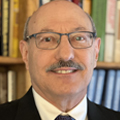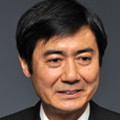| Plenary Speakers Name and Affiliation, Short Biography, Paper Title and Short Abstract |
|
|---|---|
 | Dr. Harry Levinson, HJL Lithography, USA PAPER TITLE Lithography in a Quantum World |
| SHORT BIOGRAPHY Harry J. Levinson is currently an independent lithography consultant. Dr. Levinson spent most of his career working in the field of lithography, starting at AMD. During the course of his career, Dr. Levinson has worked on lithographic technologies from g-line to EUV. He has published numerous articles on lithographic science, on topics ranging from thin film optical effects and metrics for imaging, to overlay and process control. He is the author of three books on lithography. Dr. Levinson is an SPIE Fellow and recipient of the Frits Zernike Award for Microlithography. SHORT ABSTRACT For many years, lithographic processes could be understood and improved using continuum models based on classical physics. After decades of scaling, the situation has changed. Atomic spacings in lithographic and device materials are now significant in size, relative to the dimensions of minimum features. Photon shot noise and variations that occur at the molecular level are now manifested in line-edge roughness and stochastics-induced defects. Roughness occurs at the dimensions of the molecular constituents of patterning materials. Future progress in lithography will depend on addressing the issues that take place at the molecular and quantum level. The size and number of constituents that make up photoresists will need to be constrained. A better understanding of the transfer of 3-dimensional roughness through etch will be required. Patterning materials structured at the molecular level may be needed to meet roughness requirements. |
|
 | Prof. John A. Rogers, Northwestern University, USA PAPER TITLE Forming Three Dimensional Mesostructures and Exploiting Them in Unusual Microsystems |
| SHORT BIOGRAPHY John A. Rogers is a Professor of Materials Science and Engineering, Biomedical Engineering and Medicine at Northwestern University, and also Director of the Querrey Simpson Institute for Bioelectronics. He has published nearly 800 papers, is a co-inventor on more than 100 patents and he has co-founded several successful technology companies. His research has been recognized by many awards, including a MacArthur Fellowship (2009), the Lemelson-MIT Prize (2011), the Smithsonian Award (2013), the Benjamin Franklin Medal (2019) and a Guggenheim Fellowship (2021). He is a member of the National Academy of Engineering, the National Academy of Sciences, the National Academy of Medicine. SHORT ABSTRACT Complex, three dimensional (3D) micro/nanostructures in biology provide sophisticated, essential functions in even the most basic forms of life. Compelling opportunities exist for analogous 3D structures in man-made devices, but existing design options are highly constrained by comparatively primitive capabilities in fabrication and growth. Recent advances in mechanical engineering and manufacturing science provide broad access to diverse highly engineered classes of 3D architectures, with characteristic dimensions that range from nanometers to centimeters and areas that span square centimeters or more. The approach relies on geometric transformation of preformed two dimensional (2D) precursor micro/nanostructures and/or devices into extended 3D layouts by controlled processes of substrate-induced compressive buckling, where the bonding configurations, thickness distributions and other parameters control the final configurations. This talk reviews the key concepts, and focuses on the most recent developments with example applications in areas ranging from mesoscale microfluidic/electronic networks as advanced neural interfaces to bio-inspired microfliers as environmental sensing platforms. |
|
 | Prof. Toshiro Hiramoto, Univ. of Tokyo, Japan PAPER TITLE Everlasting CMOS Innovation: The Future Perspectives |
| SHORT BIOGRAPHY Hiramoto is a Professor of Institute of Industrial Science, The University of Tokyo. His research interests include low power CMOS device design, variability in scaled transistors, silicon nanowire transistors, and silicon power transistors. He has been the President of Japan Society of Applied Physics (JSAP) since 2022. He was on Committee of IEDM from 2003 to 2009. He served as the Program Chair of Symposium on VLSI Technology in 2013 and the General Chair in 2015. He was the Program Chair of International Conference on Solid-State Devices and Materials (SSDM) in 2016. SHORT ABSTRACT The rapid progresses of CMOS logic technology were mainly driven by microprocessors in 1990s and 2000s. Recently, the technology driver has been replaced by high performance computing for big data in the cloud, mobile computing in the edge, and ultra-low power sensing/computing in the internet of things (IoT). The 3nm CMOS platform will be ready within this year. Thanks to increasing strong demands for higher performance, lower energy consumption, higher integration, and lower cost for the abovementioned technology derivers, the CMOS progresses will never stop soon in the future. In this presentation, the historical trends of advanced CMOS in the past and at the present are reviewed in terms of device speed and energy dissipation. Then, the future CMOS technological trends including device architecture, new materials, and 3D integration are outlined. |
|
MNC 2022, 35th International Microprocesses and Nanotechnology Conference, November 8-11, 2022
